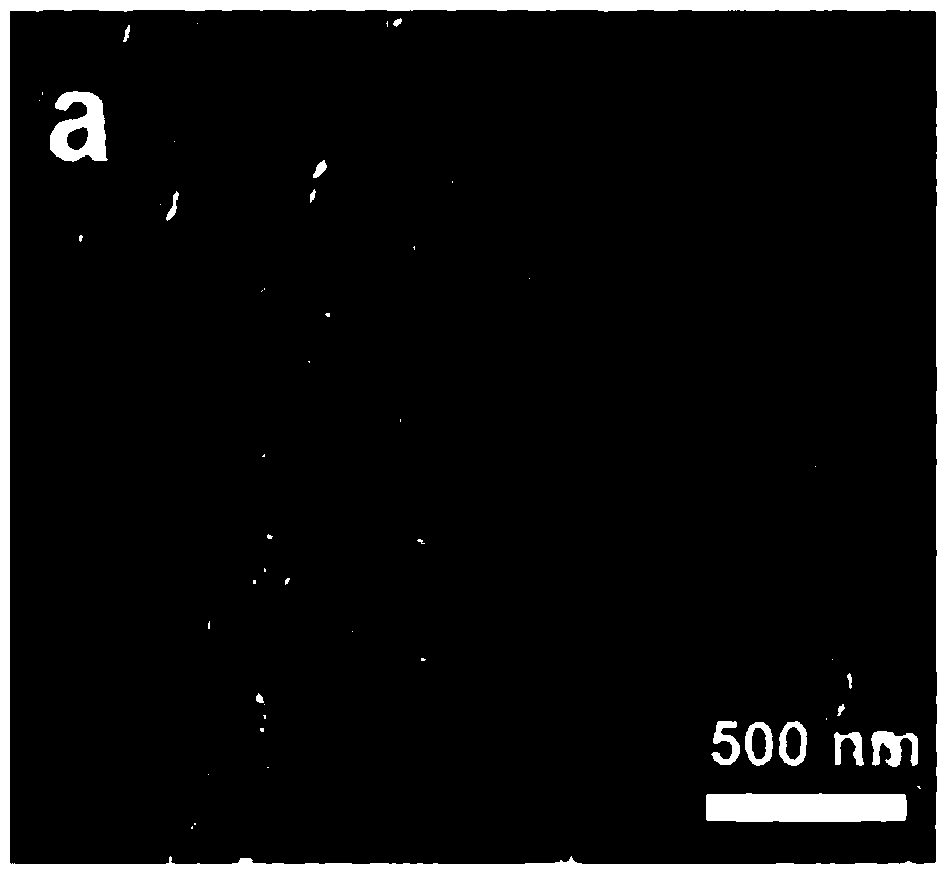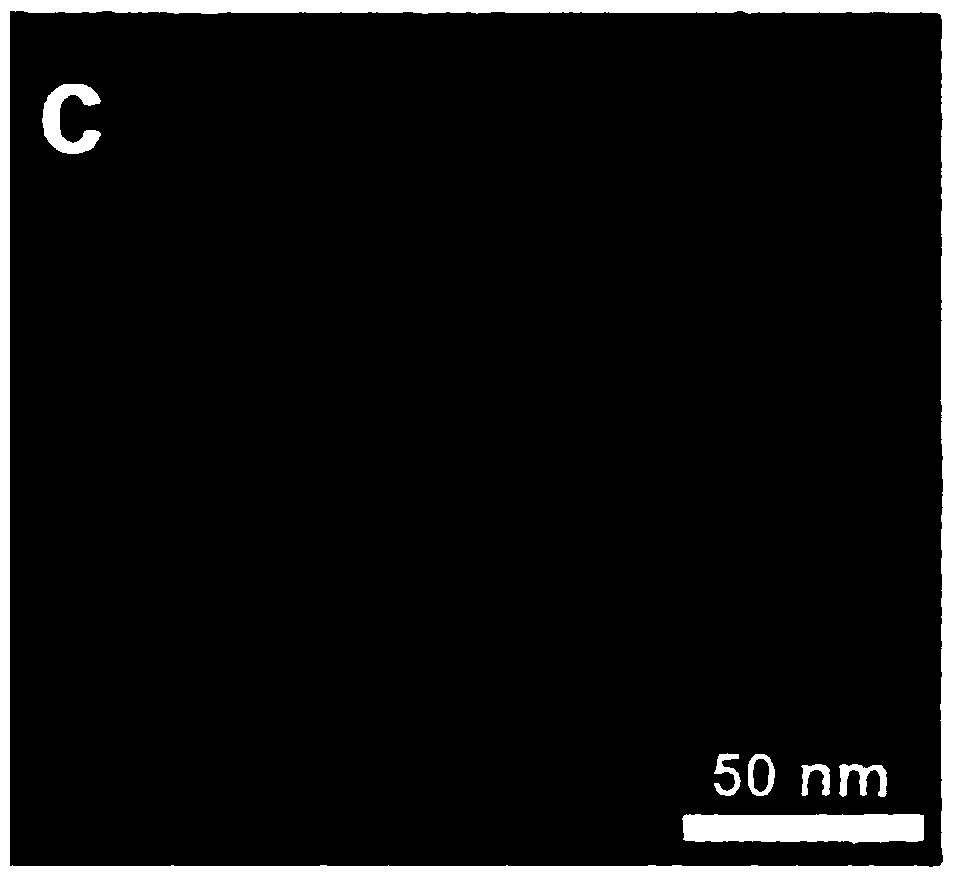Graphene quantum dot-graphene composite material as well as preparation method and application thereof
A technology of graphene quantum dots and composite materials, applied in the field of inorganic nanomaterials, can solve the problems of complex synthesis methods and doping, and achieve the effects of good electrochemical performance, huge application potential and industrial value
- Summary
- Abstract
- Description
- Claims
- Application Information
AI Technical Summary
Problems solved by technology
Method used
Image
Examples
Embodiment 1
[0074] (1) Hexabromobenzene, sodium metal and toluene were stirred, sealed and reacted for 20 hours at 220°C and 2MPa in a high-pressure reactor with a polytetrafluoroethylene liner, wherein hexabromobenzene and sodium metal The mass ratio of hexabromobenzene and toluene is 1:2, and the mass volume ratio of hexabromobenzene and toluene is 1:100g / ml;
[0075] (2) After the reaction, the pressure was released to normal pressure, and naturally cooled to room temperature, and centrifuged to obtain a solid, which was washed with water and absolute ethanol in sequence, and vacuum-dried at 80° C. for 10 hours to obtain a dry sample;
[0076] (3) Under the protection of argon, the dried sample was treated in a tube furnace at a high temperature of 1000° C. for 2 hours to obtain the graphene quantum dot-graphene composite material of the present invention, named G1.
Embodiment 2
[0078] (1) Hexabromobenzene, sodium metal and toluene are stirred, sealed and reacted for 24 hours at 180°C and 1MPa in a high-pressure reactor with a polytetrafluoroethylene liner, wherein hexabromobenzene and sodium metal The mass ratio of hexabromobenzene and toluene is 1:1, and the mass volume ratio of hexabromobenzene and toluene is 1:50g / ml;
[0079](2) After the reaction, the pressure was released to normal pressure, and naturally cooled to room temperature, and centrifuged to obtain a solid, which was washed with water and absolute ethanol in sequence, and vacuum-dried at 60° C. for 12 hours to obtain a dry sample;
[0080] (3) Under the protection of argon, the dried sample was treated in a tube furnace at a high temperature of 1000° C. for 1 hour to obtain the graphene quantum dot-graphene composite material of the present invention, named G2.
Embodiment 3
[0082] (1) Hexabromobenzene, sodium metal and toluene were stirred, sealed and reacted for 16 hours at 240°C and 4MPa in a high-pressure reactor with a polytetrafluoroethylene liner, wherein hexabromobenzene and sodium metal The mass ratio of hexabromobenzene and toluene is 1:3, and the mass volume ratio of hexabromobenzene and toluene is 1:150g / ml;
[0083] (2) After the reaction, the pressure was released to normal pressure, and naturally cooled to room temperature, and centrifuged to obtain a solid, which was washed with water and absolute ethanol in sequence, and vacuum-dried at 100° C. for 8 hours to obtain a dry sample;
[0084] (3) Under the protection of argon, the dried sample was treated in a tube furnace at a high temperature of 1000° C. for 3 hours to obtain the graphene quantum dot-graphene composite material of the present invention, named G3.
PUM
| Property | Measurement | Unit |
|---|---|---|
| Size | aaaaa | aaaaa |
Abstract
Description
Claims
Application Information
 Login to View More
Login to View More - R&D
- Intellectual Property
- Life Sciences
- Materials
- Tech Scout
- Unparalleled Data Quality
- Higher Quality Content
- 60% Fewer Hallucinations
Browse by: Latest US Patents, China's latest patents, Technical Efficacy Thesaurus, Application Domain, Technology Topic, Popular Technical Reports.
© 2025 PatSnap. All rights reserved.Legal|Privacy policy|Modern Slavery Act Transparency Statement|Sitemap|About US| Contact US: help@patsnap.com



